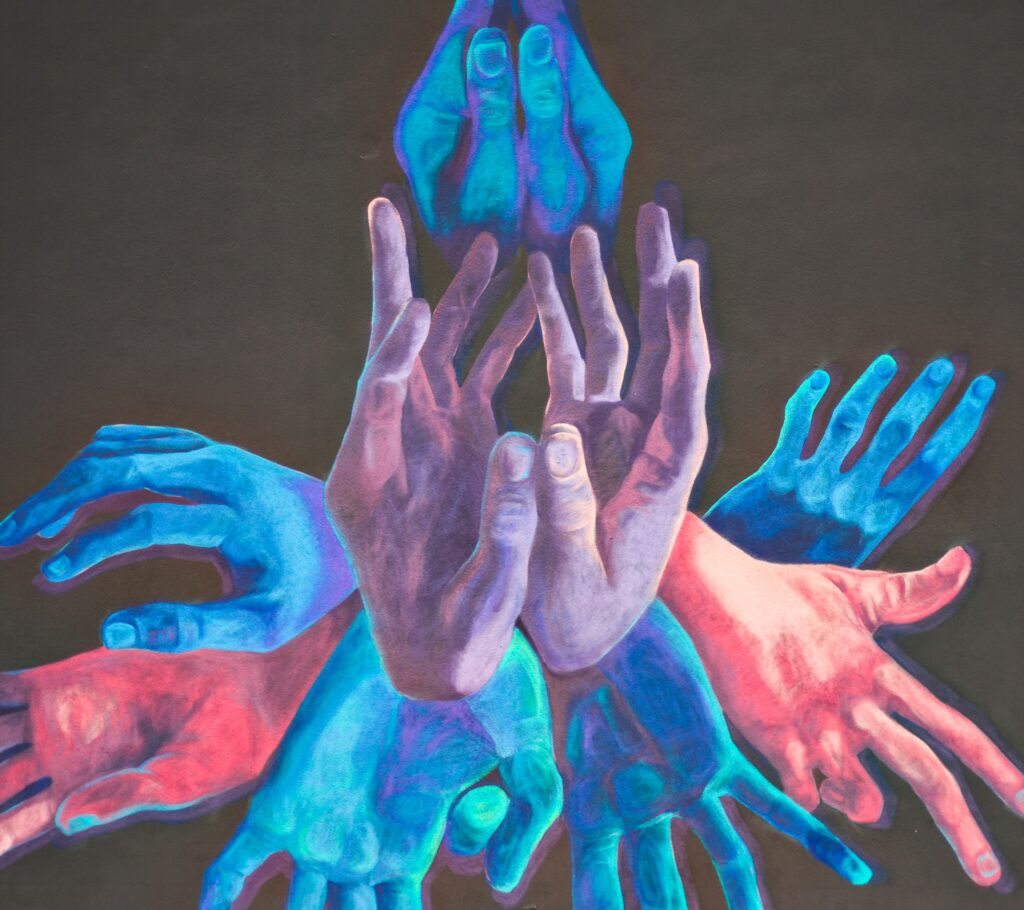As we approach end-of-year fundraising in a less-than-stellar economy, it may behoove fundraisers to remember the importance of their work. Yesterday, we co-hosted a webinar with the Center for Civil Society, in which Kyle Vander Meulen reminded us that one silver lining of the tough times ahead is that the challenge of fundraising in a bear economy is an opportunity to lean into the work and rise to the occasion.
That is no easy task, to be sure, but remember the importance of the mission you serve — and, beyond that, the value that the act of fundraising brings to the world. To that end, we are revisiting this symposium on "the higher calling of fundraising" from 2019.
Introduction to "The Higher Calling of Fundraising," June 2019
Last week Philanthropy Daily teamed up with American Philanthropic to host a panel discussion on “The Higher Calling of Fundraising” in celebration of the release of Jeremy Beer’s and Jeffrey Cain’s new book, The Forgotten Foundations of Fundraising.
Each in their own way, Philanthropy Daily and American Philanthropic exist to strengthen civil society, to bolster the “little platoons” of American life. By working with nonprofit groups and commenting on news, trends, and ideas in philanthropy, American Philanthropic and Philanthropy Daily (respectively) help nonprofits advance their missions.
As Beer and Cain write in Forgotten Foundations, “We stand, first and last, for civil society,” for the nongovernmental, extrafamilial, voluntary associations that foster healthy communities and happy citizens. Without associational life, we are less happy, and our democracy is less healthy. We see this today. Waning civic participation means widespread unhappiness as well as political and social distrust.
This unfortunate state of affairs indicates why nonprofit fundraising is noble and important work, and why the fundraiser is so important today—because his is the work of combatting a fracturing society.
Often thought of as gimmicky, underhanded, or transactional, fundraising is in fact none of these things. Much to the contrary, fundraising is about forming relationships and building trust amongst individuals and parties who share an interest in the same mission. As panelist Nathan Washatka has written, fundraising is about “a shared pursuit of virtue and the common good.” In a world increasingly fragmented, “shared pursuits” are increasingly rare. The fundraiser thus stands athwart today’s disintegrating tendencies.
Fundraisers have the great responsibility of generating shared pursuits of lofty and invaluable missions—protecting at-risk youth, educating children, healing the sick or feeding the hungry, pursuing knowledge or helping needy families, and so on. The work of the fundraiser is the work of advancing valuable missions as well as knitting together the social fabric that fosters a healthy society.
It is this work—building relationships, strengthening what Jeremy Beer terms the “associational realm”—which we recognize as a high calling indeed.
In the articles that follow, each based on their remarks from the event, Jeremy Beer, Jeffrey Trimbath, and Nathan Washatka reflect on the meaning of fundraising and its role in strengthening civil society, while also offering practical tips for good fundraising.
Civil Society, Individual Happiness, and the Fundraiser
By Jeremy Beer
American social capital, especially in those places not home to heavy concentrations of college-educated professionals, is in a state of collapse.
Politically and socially, America is characterized by polarization, vilification, and anger. Economic segregation is on the rise. So are suicide rates and cases of depression. The opioid epidemic plagues vast swathes of our country. Marriage rates among the non-college-educated have plummeted. Loneliness and a sense of meaninglessness are increasingly pervasive.
The list goes on. In short, we are not a happy people.
At the same time, our social science has reached an unusual level of clarity in revealing the elements that make at least for a surface-level, it’s-pretty-good-to-be-alive level of happiness: being married and having kids, making enough money ($75,000 seems to be the magic number), going to church, having meaningful work, and having a lot of friends and acquaintances.
Those are happiness’s essential ingredients. It’s not a secret.
And yet we humans—disoriented creatures that we are—have constructed a world that draws us away from each one of those ends with almost devilish perfection.
The cost of marriage is higher than ever, meaningful work is difficult to find, and going to church is increasingly unpopular. Meanwhile, the world we inhabit draws us away from real social connectedness and into ourselves. Knowing that friends and acquaintances are crucial components of a flourishing life, we nevertheless find ourselves turned increasingly inward, distracted from association by social media, video games, and our endlessly twittering phones. Knowing that happiness feeds on contentment, we nevertheless nurture dissatisfaction by focusing on what others have and we do not.
As a result, civil society—or what might better be termed the “associational realm,” the world of intermediate nongovernmental, nonfamilial institutions—has eroded to an incredible extent. And that’s a huge problem, because we aren’t just political beings, as Aristotle said. We are social beings, as Augustine and Aquinas more fully understood.
The social is not some add-on to a pre-existing individual. It is in fact constitutive of the individual. Associational life is therefore intrinsic to our flourishing as human beings—and its absence is destructive of our happiness.
* * *
All this points us to why fundraising is truly a high calling, a noble vocation. In America, the nonprofit sector—churches, schools, homeless shelters, museums, symphonies, even think tanks and advocacy organizations—each of these constitute the proper home of our associational life. And thus in order to draw people into their orbit, into the associational realm, these institutions need resources. They need money.
That’s where the fundraiser comes in.
For fundraisers, job number one is an important one: to help our mutual associational life flourish by helping institutions within the nonprofit sector obtain the money they need to fulfill their missions. This is a beautiful goal, a very worthy vocation.
But there’s more.
It would not be enough if we just had a donor class transactionally Venmoing dollars to recipient organizations, whose professional staffs then attempted to obtain the highest social-return-on-investment possible. That would be to think about fundraising and the nonprofit sector generally as mere tools, as techniques, for bringing about some desired social change. This would reduce philanthropy and our associational life to a merely technocratic enterprise.
Now, I am not on principle opposed to “desired social change” (although it ought to be more broadly understood that not only is social change nearly always contested, it is frequently rationally contestable) but to think about our work that way misses the most important point. Far and away the most important thing the nonprofit sector does is to bring people together in such a way that they mutually and cooperatively seek to achieve common social goods.
These terms ought to draw our attention: mutually, cooperatively, common, social, goods. These words bring us to the heart of the matter—that this work is not fundamentally transactional. It is relational.
Our job as fundraisers is to create strong bonds—we might say bonds of social communion—between donors and our organizations, and among our donors themselves. Our goal is to get our donors to identify with our organizations, to unite their story with the organization’s story, to at least partially locate their story within the organization’s story, and to feel themselves part of an associational community.
In other words, our job is to help diverse individuals to become a part of something larger than themselves—and thus to help them flourish. As fundraisers, we can push against the loneliness and isolation that diminish our potential for true happiness. We can build the associational realm which is the sine qua non of a flourishing society.
There’s more good news: when we try to do this, we hit on the deepest sources of human motivation. As Notre Dame sociology professor Christian Smith (among many others) has demonstrated, belongingness is perhaps the most fundamental psychological need of all—and thus a powerful source of human motivation.
Now, we often have to come at this need for belongingness in a sidelong fashion with any particular donor—because, remember, humans are confused and disoriented creatures. But, nevertheless, if we can serve that need, we not only serve our organization and its constituents well, we also serve that individual donor well. We serve society well.
And that is why fundraising is truly a high calling.
Slaughtering Cows and Reducing Distractions: the Keys to Fundraising Success
I come from Lancaster County, Pennsylvania which for those of you who don’t know, is about 75 miles to the west of where we gather this evening. As I read The Forgotten Foundations of Fundraising, I kept thinking about a restaurant in my hometown called the Stockyard Inn. It is so named because it is one of the only structures left from the formerly famous Lancaster stockyards. They were the largest stockyards east of Chicago, supplying the east coast with thousands and thousands of cattle each year.
That image came to mind as I read the book, because Jeremy Beer and Jeffrey Cain do something that happened quite a bit at those stockyards: they slaughter plenty of the “sacred cows” of fundraising. And those cows needed to be slaughtered.
Their advice comports with much of my experience as a fundraiser and as a consultant for the past 12 years. I found myself saying “yes,” “I agree with that,” and “That’s right” on just about every page.
What I love most about the book is that it gets to the heart of the task of fundraising with great simplicity. It is the Marie Kondo to the hoarders of the world of fundraising. With ruthless precision, they dispose of bad ideas and disabuse readers of bad habits.
Start with the basics: what is the essential task of fundraising? You could go to many places in the book, but my favorite summary comes from page 51: “Fundraising consists of two primary tasks: find new donors, and cultivate the ones you have.” We could quibble with the order of importance of those two tasks, but that’s it. Practically speaking, that’s what we do as fundraisers.
Doing these two fundamental tasks isn’t easy. As I like to say fundraising is simple—but it isn’t easy. It requires discipline, focus, and most of all, a commitment to the mission of the organization. It is often difficult—like any vocation—but it isn’t complicated.
Now why, you might ask, is this simple message important and necessary? Because the raising of money is a task that is fraught, as Jeremy says, with distraction. These distractions are true for individual fundraisers and for whole organizations.
Beer and Cain go after—they “slaughter”—some of my favorite distractions to impugn.
Fundraising Events. So many organizations believe that an event is the thing that will garner funds. This is a grave error. When you look at all the costs—don’t forget staff time and opportunity costs—they so rarely make sense. A fundraiser’s time spent planning an event is time not spent meeting with donors. It’s time not spent contacting new donors.
The “big whale.” This takes the form of someone saying “hey, you should go meet with Jim Smith down the street. He just sold his company for $100 million. He’s got tons of cash.” Well-meaning advice and usually sincere, this suggestion is very typically not going to work. Reliable donors aren’t found because they’re wealthy. They are found because they believe in your organization’s mission. As Jeremy says, they want to locate their story within the organization’s story.
Planned giving. This one typically comes when we hear that another organization got a huge gift from a donor who just died. The Board Chair or the Executive Director then says to the team, “Hey, we need a planned giving effort” and he initiates a time-consuming, never ending search for an expert in all things related to death, trusts, and taxes. We immerse ourselves in lead trusts, NIMCRUTS, CRAT’s, CGA’s, and so on and on. We overcomplicate planned giving to the point that we not only never launch a planned giving program, but we (again) waste time on inessential tasks.
Here’s an important statistic: over 80% of all planned giving in the country is one simple sentence. Yes, you do need the help of an attorney to insert this sentence into a will or living trust (though you don’t need the help of an attorney to insert this into a beneficiary designation of a bank, brokerage, or retirement account).
But think about that: one sentence. “I bequeath X% of my estate to Z organization.” I think I can memorize that. Every major gifts officer—every fundraiser—should memorize that. Be prepared to share that with planned-giving prospects. That is the sentence you need to launch a planned-giving program.
Finally, the CFRE (the Certified Fund Raising Executive certification). I’ve never received the designation. I’ve thought about it. I’ve been encouraged to receive it. But I’ve never had the time to do it. I’ve always been focused on doing what fundraisers do: preparing to meet with, meeting with, and following up from meeting with our donors. I have not needed expensive and (again!) time-consuming training in order to do those three tasks.
Instead of being distracted, the book calls you to do the right thing: communicate clearly and compellingly to prospective donors. Thank your donors well. Inspire them to increase their involvement by building genuine relationships based on mutual interests and motivations.
In sum: treat your donors like humans. If there is a magic formula to fundraising, that is it. Treat your donors like humans.
Do the simple things well, don’t get distracted by unproductive tasks, and success will follow. If you do this as a fundraiser and as an organization, and do it well over your careers and lifetime, then it is my hope you will not merely endure, but enjoy your work as you contribute to what Jeremy has called the “Associational Realm” and a flourishing society.
Fundraising and Belonging
Like many of you, I’m a fundraiser.
I’ve been a fundraiser for about five years now, but I still feel conflicted when I tell people what I do for a living. This is true even when I talk to people within my own (very large) organization. On the one hand, others generally recognize the value of my work: I’m supporting the institution, raising money that allows us, collectively, to accomplish great things.
But sometimes, the response is tinged by discomfort. Asking people for money is awkward. It’s strange. Who would ever want to be a fundraiser?
Just last week, as I was out for a walk with my daughters, I passed a house in my neighborhood with a “No Soliciting” sign posted beside the front door. I’ve been by that house many times before, but I’d never noticed the sign. It included a list of things the homeowner did not want to be bothered with—things like magazines, politics, and religion. At the very top of the list was ‘charity.’
Most of us probably don’t have such signs beside our front doors, but I certainly sympathize, at least on some level, with the sentiment behind the sign. We’re bombarded with advertisements everywhere we look. The claims on our attention and wallets are limitless. It’s only natural to want a respite. “Please don’t knock on my door and ask me for anything else!” This is why fundraising strikes many people as an awkward profession. It runs in direct opposition to our ‘No Soliciting’ attitudes.
Still, we shouldn’t let that sign have the last say.
To the extent that I’ve grown more comfortable as a fundraiser, it’s because I know that my efforts are supporting a great cause. I’m sure many other fundraisers feel the same way. Asking for money might be uncomfortable at first—but asking for money for the right reasons, that isn’t so bad.
Lately, though, I’ve come to think of fundraising in a slightly different way. There is more to fundraising than advancing a mission. Fundraisers are important not just because we enable our organizations to achieve good outcomes—to raise third grade reading levels, or to clean up a watershed, or to do whatever great things your own organization is doing—but because our work builds trust in those organizations.
We fundraisers are advocates for associational life, for civil society. As Jeremy Beer and Jeffrey Cain describe so eloquently in The Forgotten Foundations of Fundraising, fundraisers “are strengthening the bonds of community; [we] are fortifying civil society; [we] are enhancing the public weal.”
Americans are more atomized than ever. We “bowl alone,” we don’t go to church, we don’t know our neighbors. As much as our culture tends to celebrate the individual, it appears that we have gone too far. We’re lonely, we relate to one another through the distorting lens of social media, and we view our fellow citizens and neighbors with suspicion. Hence the signs beside our front doors: “Do not solicit. I don’t trust you.”
One of the most valuable insights in Forgotten Foundations is the role that belongingness plays in fundraising. We live fractured lives, and as a consequence, we long for connection more than ever. This longing is not sated by social media and its “digital connections.” We need more intimate, proximate, and substantive connection.
I’m convinced that belongingness matters to donors because it informs my fundraising work, day in and day out. I work at a large organization where it can be difficult for individual donors to establish a feeling of connection. People are reluctant to give to an organization that seems too large, too incomprehensible. A massive organization like the Cincinnati Children’s Hospital Medical Center can seem distant, anonymous. It is my job to remove that anonymity, to reduce that distance.
My coworkers and I work hard to provide avenues for donors to build relationships, to help them feel like they belong, like they are a part of Cincinnati Children’s. We don’t sit back and wait for donations to roll in. Even if we appear on a list of good hospitals, donors won’t be moved to give by that fact alone. We have to help would-be donors become a part of our work. We have to show them that whatever the hospital achieves is truly a shared achievement.
Fundraisers are tasked with asking donors to support institutions—to have faith in institutions, to participate in the life of institutions. As Forgotten Foundations makes clear, institutions can provide a sense of belonging. Obviously, not every institution is a good one, but I think, by and large, it’s good when people work together. It’s good when we belong to something.
As fundraisers, we will confront literal and metaphorical ‘no soliciting’ signs. This simply shows the social dimension to our work. Our job is not to badger people into being more generous. It’s to invite others into fuller participation with the community. It’s to offer the chance to belong to something bigger than the individual.
When we do this well, we not only support our institutions of employment, we also foster a heathier society—a community composed, not of individuals walling off solicitors, but of donors and donees coming together to advance a shared mission.






